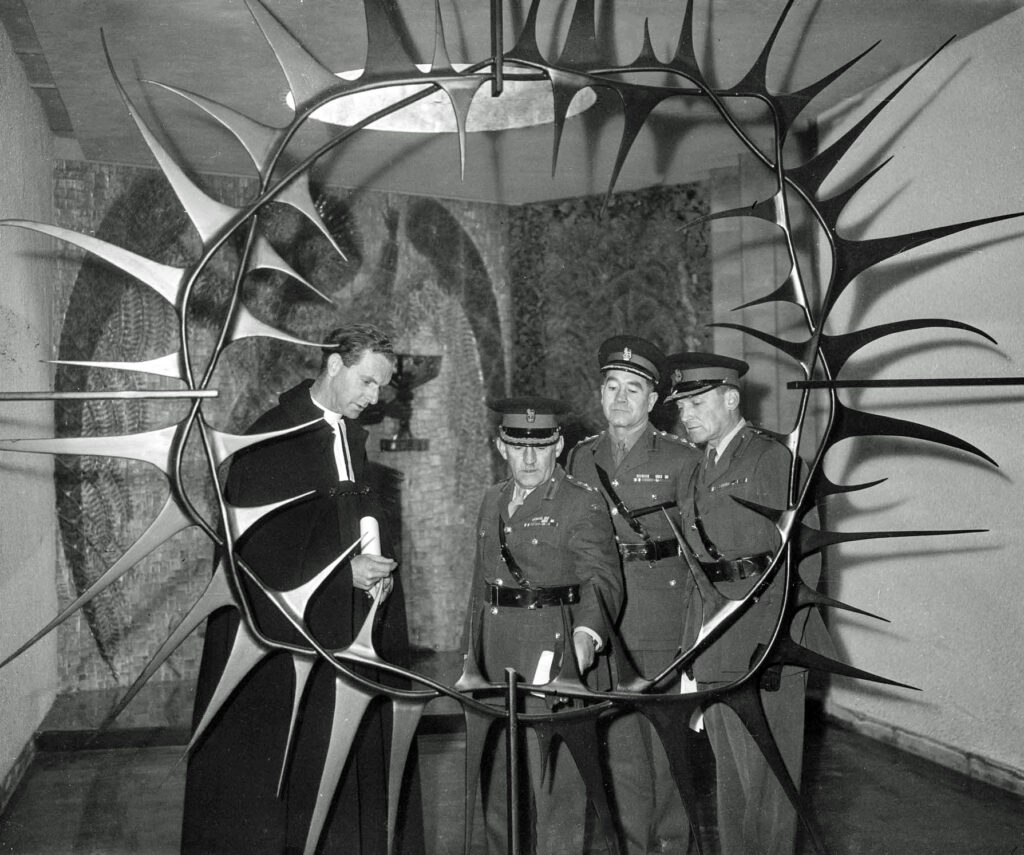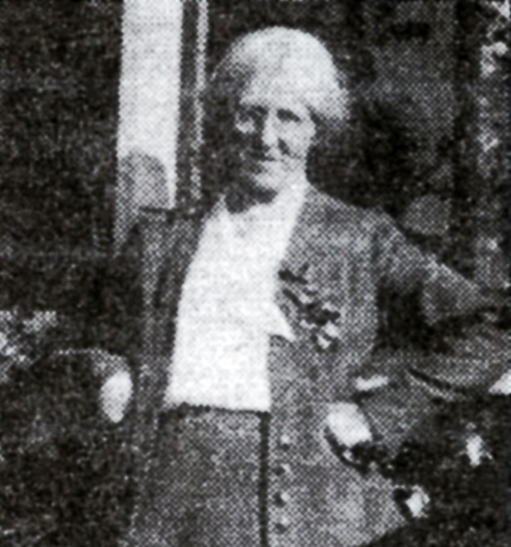In the latest edition of the e-news of the Friends of Coventry Cathedral, Chair Martin Williams reflected on some of the things that he sees regularly and takes for granted. Martin writes….
Strangely, one of those things inside the Cathedral that came to mind was the iron screen at the entrance to the Chapel of Christ in Gethsemane. It has a particular significance that is often overlooked.
We all know that Basil Spence was the architect who designed Coventry Cathedral, but the crown of thorns at the chapel entrance was designed by Spence as his one specific artistic contribution to his Cathedral.
We know a lot about Spence’s screen. The screen was made in the workshops of the Royal Engineers. It was formally presented to the Cathedral at a short service of dedication in December 1961. At the service led by Provost Williams, Canon Joseph Poole read passages from St Luke’s Gospel about the agony Jesus in the Garden of Gethsemane. Canon Edward Patey read from the Gospel of St Matthew about the making of the crown of thorns.
Construction of the screen had begun in April 1961 in the Blacksmiths and Welders Shop of the Trades Training Workshops at the Royal School of Military Engineering in Chatham. From there it travelled to the Royal Engineers Depot at Long Marston, where it underwent a thorough preservation process before being painted egg-shell black. The original suggestion that the Royal Engineers wished to contribute to the new Cathedral followed a visit by Bishop Bardsley to the Long Marston workshops.

At the presentation service Brigadier E F Parker, Commandant of the School of Military Engineering, formally presented the screen to the Cathedral. He was accompanied by Brigadier H R Greenwood and Colonel T H Egan.
Brigadier Parker spoke movingly about the project. There had been enthusiastic work contributions from both military and civil craftsmen at the workshops. Everyone was delighted to make a contribution to what was one of the finest buildings in the country to the Glory of God.
In response Provost Williams spoke of the significance of the gift from the Royal Engineers, who were still remembered with fondness in the city for their help and kindness after the Coventry Blitz. “We shall treasure this screen in the same way as the other artistic treasures of this Cathedral.”
To complete the story of the Chapel, the furnishings of the Chapel of Christ In Gethsemane were donated by members of the Old Cathedral Girls’ Fellowship as a memorial to Miss Ethel Loveitt, who had been one of their leaders.

Miss Loveitt was a parish worker whose ministry centred around St Michael’s Mission, a building which housed the Cathedral’s city outreach in Whitefriars Lane. In those days the Mission stood and worked in one of the most deprived areas of Coventry. From there she distributed coal, food, clothing, faith, hope and love. Her figure cycling around the city with a basket stuffed full of odds and ends was a familiar sight.
She and her sister, Janet, died whilst caring for a bedridden lady during the great air attack of Good Friday 1941. That was Coventry’s second great blitz. In 1941 it was the Easter bombing attack that destroyed Christ Church – Coventry’s third spire.
At Ethel’s memorial service it was said, “There could have been no single person in the city whose loss could possibly have been felt by a larger number of people.” Amongst many, many other activities, “Lovey” (as she was known) organised outings that introduced crowds of city centre slum-dwelling children to their first experience of the countryside. As a result of her work the story was told of the child who knocked on the door of St Michael’s Mission and asked, “Jesus lives here, doesn’t He?”.
The furnishings of the Chapel of Christ in Gethsemane are a fitting memorial to a lay worker whose work and actions carried the message of the Gospel into the city.
